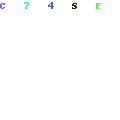What are T-Rex Arms?
Some people may adopt a posture associated with autism, such as standing with their arms extended and their hands limp. Generally speaking, the idea is that people with autism can do things their way.
T Rex Arms, The Autistic
The topic of discussion this week is the peculiar and humorous side of living with autism that has to do with using our arms. These positions, which autistic people or others who know them well may recognize, are helpful rather than harmful, allowing the autistic person to feel at ease and natural. Nothing has to be changed.
People with autism frequently want to hold their arms out in front of them at a 90-degree angle, or “T-Rex arms.” They may not know how to use their arms, so this stance feels good for them. Certain autistic people may also use their T-Rex arms as a kind of stimulation, based on their personal demands and calm states. A particular favorite, the “Alexis Rose arms” are named after the motion that Alexis frequently makes in Schitt’s Creek. Annie Murphy, an actress, was inspired by celebrities who swung their arms while carrying purses to modify the motion to include both arms for her character, Alexis.
Objects may be held closer to the chest by autistic people than by neurotypical people. When hands are not accessible, this position might be adopted, as it is usual when holding books or water bottles. Although the exact cause of this posture is unknown, it might have something to do with feeling safe. A replacement instructor thought the author was praying in a high school incident.
The security posture of folding our arms can be seen differently by neurotypical and autistic people. Autistic people may feel uneasy or uncertain about how to use their arms, whereas neurotypicals may see it as a sign of coldness or a need for distance. If you’re unsure about someone, it’s crucial to find out about their feelings. This article encourages readers to share their favorite poses with their loved ones who have autism. It also examines autistic mannerisms and their implications.
Why do some individuals with autism stand in this way?
Standing with T-rex arms can be beneficial for parents of autistic children for a variety of reasons. Self-soothing is one option since it can make them feel less stressed and overwhelmed by sensory input. Reducing sensory input is a another option. By standing with their arms crossed, T-rex arms can minimize the amount of space they occupy and shield their hands and arms from contact. This can alleviate fatigue and lessen the chance of dangles and brushing items.

Additionally, since autistic people often repeat specific behaviors without recognizing it, standing with T-rex arms may become a habit for some of them. For those with autism, these behaviors may be more difficult to overcome and become ingrained in their daily lives. All things considered, using T-rex arms to support oneself while standing may help children with autism better meet their sensory needs and feel better about themselves.
Should we make an effort to stop them?
Although parents frequently wonder if they should step in to change their autistic child’s behavior, they find that keeping their child in the tex arms stance is safe, non-limiting, and disruptive. The child might feel more at ease, and everyone would have to decide whether or not to step in. There might be more beneficial uses of time, though, if it makes the child feel at ease and peaceful. The degree of comfort and general wellbeing of the child would determine whether or not to interfere.
Is it comparable to arms for autism?
The term “autism arms,” which has been making the rounds on the internet, is well recognized. But the word could come across as harsh or critical. Given the similarity between the terms “autism” and “t-rex arms,” it is important to take other people’s feelings into consideration.







